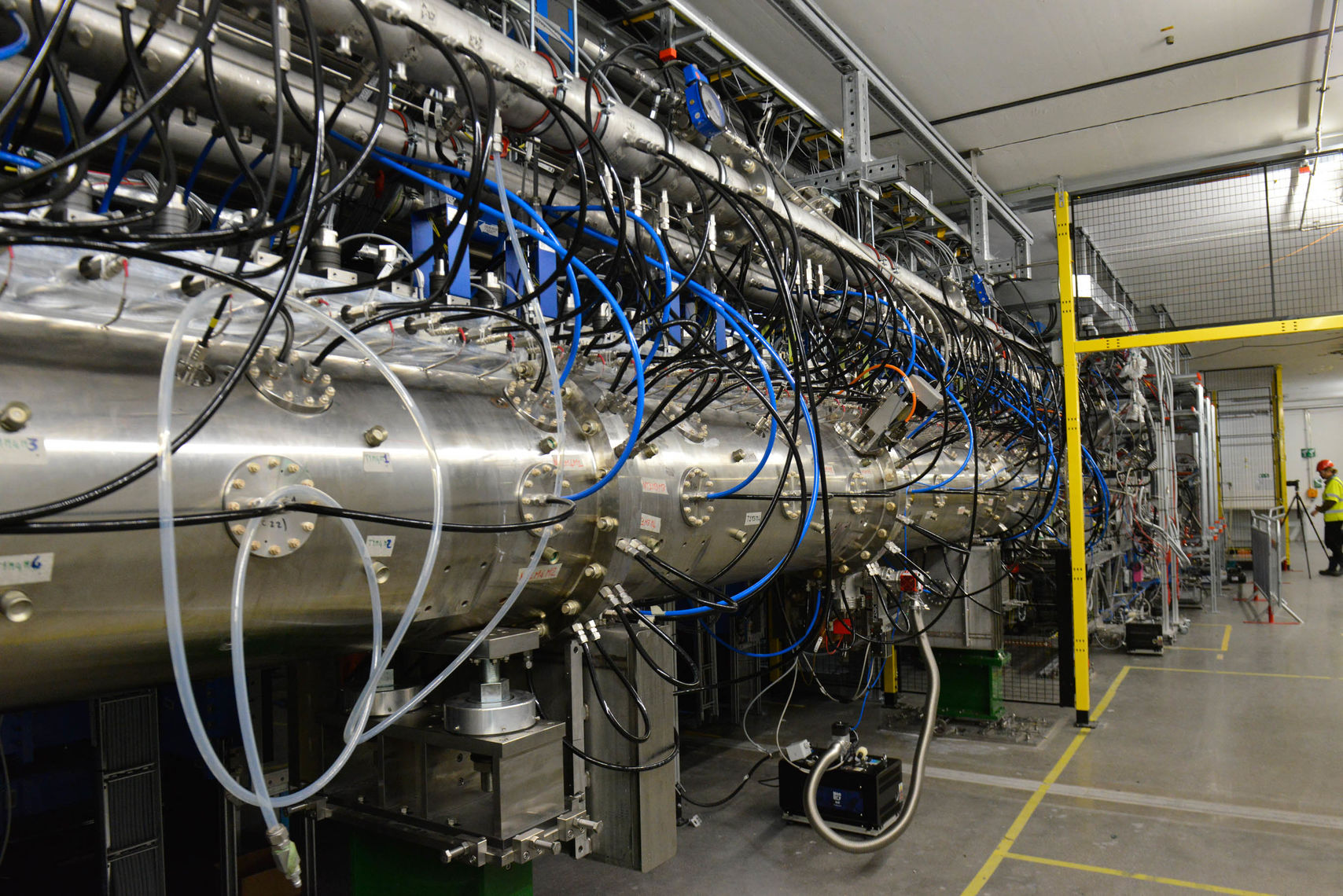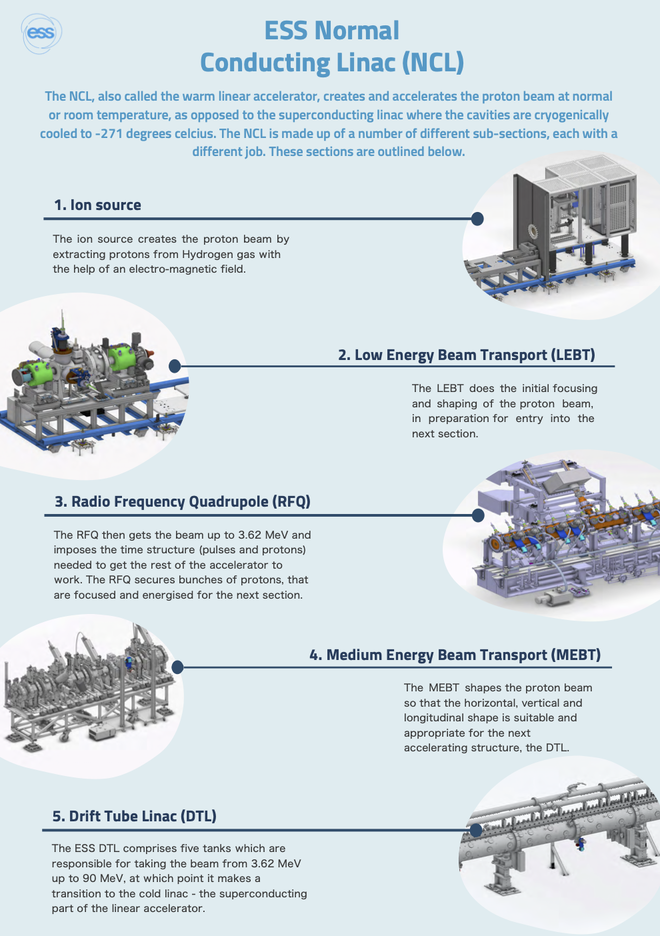
Beam commissioning in the normal conducting part of the accelerator at European Spallation Source (ESS) begins today – an important milestone in the construction of the multi-disciplinary research facility.
The beam commissioning is a complex process that will take several months and involve a large number of physicists, engineers and technicians to get the first part of the accelerator fully operational.
The linear accelerator at ESS will deliver a high intensity proton beam to the target, where the neutrons needed for scientific research will be generated. The normal conducting linac (NCL), located at the far end of the almost 600-metre-long accelerator, consists of technical components delivered by the ESS in-kind partners INFN (Italy), CEA (France) and ESS-Bilbao (Spain).
The ongoing pandemic has significantly impacted ESS and its partners, causing delays in the project. Nevertheless, Acting Director General Kevin Jones was today able to sign the authorisation to operate the NCL, marking the official start of the beam commissioning. This extensive process consists of many steps, where all the technical systems, accelerator components, and eventually the beam itself, will be tested, monitored and optimised, increasing the power in stages until reaching full capacity.
“We have committed to deliver a world-leading facility for materials research, and the start of the beam commissioning in the normal conducting part of the accelerator is a major step forward on the road to completion for ESS,” said Kevin Jones, ESS Acting Director General. “Before the end of the year we will be accelerating proton beam at ESS, thanks to the efforts of our partners and staff.”
The commissioning in the NCL commences after a comprehensive installation phase, which has included installing, testing, and conditioning of the accelerator components, infrastructure work; such as pulling more than 250 000 metres of cables and placing several thousand metres of cooling pipes, installing and testing the radio-frequency (RF) systems needed to accelerate the beam, as well as validating all the safety systems.
“I am extremely proud of all the hard work performed by our in-kind partners and our own physicists, engineers and technicians here at ESS, enabling us to hand over large parts of the normal conducting linac for commissioning,” said Mats Lindroos, ESS Head of Accelerator Division. “We have had to work under very special and challenging conditions during the pandemic, and yet we are ready to soon run the proton beam in the accelerator.”
The ESS Beam Physics and Operations teams will execute the commissioning, fine-tuning and operation of the NCL, in close collaboration with other teams in the Accelerator Division, as well as the Integrated Control Systems Division.
“We are very much looking forward to start the commissioning process in the normal conducting linac together with all the teams involved,“ said Lali Tchelidze, ESS Section Leader Operations. “We have trained operators and shift leaders for a long time to be ready to operate the systems and eventually run beam.”


























